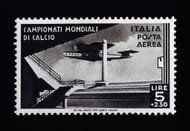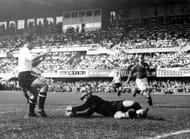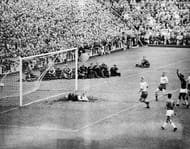Wednesday afternoon saw the 68th FIFA Congress held in Moscow. On the agenda amongst many other issues was that of the 2026 World Cup hosting rights.
The vote took place with 200 of FIFA's 211 member nations casting their decision as to whether the 'United' bid or Morocco should host the World Cup which will be the first to feature 48 teams.
The 'United 2026' bid was selected by Fifa member nations to host the 2026 World Cup.
The bid from Canada, Mexico and the United States secured 134 votes, compared to the that of Morocco's bid which received just 84.
The 2026 World Cup will take place across 16 host cities, with plans of 3 opening matches being held in each of the host nations.
With the tournament set to be the first to host 16 groups of three teams in the preliminary stage of the tournament. An additional 16 teams will join the tournament compared to the current 32 team format that started in 1998.
This gives a host of chances to lesser nations to make it to one of the world's biggest sporting event. There is no doubts that the usual suspects will be those reaching the final stages. But, with a greater number of teams, comes a greater chance at upsets in the tournament.
With Iceland already holding Argentina to a draw in their opening game of Group D, whilst Iran top Group B after round one following an unlikely win against Morocco to put them ahead of Spain and Portugal it's clear that more nations in the World Cup could enhance the competition even further.
From no goal differences, to World Cups with two group stages, Sportskeeda's Kieran Buggs takes a look at the history of the World Cup's format and the changes it has undergone since the inaugural tournament in 1930.

1930 URUGUAY – 13 TEAMS – 18 MATCHES
The 1930 FIFA World Cup hosted by Uruguay was the inaugural FIFA World Cup tournament and the only FIFA World Cup to date that did not feature a qualification campaign to reach the tournament. Every FIFA member nation was invited to the tournament, however, only 13 teams took part due to the long trip to South America that was required to compete.
The 18 matches at the tournament included 4 European teams, whilst the rest competing travelled from the Americas. The maiden format consisted of four groups, one containing four teams whilst the rest featured just three. Each team would receive two points for a win and one point for a draw with the winner of a group progressing to the Semi-Finals.

1934- ITALY - 16 TEAMS - 17 MATCHES:
It wasn’t long before the format of the FIFA World Cup was changed. The second World Cup, hosted in Italy, meant that many European teams could make a much simpler journey to compete. Qualifying for the tournament saw thirty-six nations competing, being narrowed down to 16 teams to compete in the tournament.
This enabled FIFA to desert the group stage and go straight to a knockout format with the even number of teams that could compete. Eight teams were seeded, meaning none of those seeded would play one other in the first round. The knockout stages all featured extra-time to settle a draw. However, in the case of the quarter-final between Italy and Spain, a replay match had to be played to decide a victor, with penalty shoot-outs not being included in the tournament.

1950- BRAZIL - 13 TEAMS - 22 MATCHES
The Brazil World Cup in 1950 saw yet another format change, in what turned out to be a rather bizarre World Cup tournament.
A total of 88 goals were scored in what was planned to be a 16-team tournament, but, withdrawals led to just 13 teams competing. The tournament was set to take place with four groups, three containing four teams with the final group containing just three. However, India pulled out of their group, with France pulling out of the group of three leaving just two teams. The one match to take place in said group, Group 4, saw Bolivia take an 8-0 thrashing against Uruguay.
The victors of each group would then be put into another group. In what was considered the final round, each of the four ‘finalists’ would play one another in another group format. The nation to top that group would be crowned champions, with no final played. Although, in the way the points tallied up, the final match between Uruguay and Brazil did prove to be the deciding match with the winner, Uruguay, being crowned the World Cup winners.

1954- SWITZERLAND - 16 TEAMS - 26 MATCHES:
The Switzerland World Cup of 1954 did, unlike that of the previous tournament, begin the tournament with all 16 teams that had made it through the qualification stage. This is where we began to see the Group stages becoming more like that of the modern competition, although it did happen its own unique way. Four teams were assigned to each of the four groups, however, unlike a conventional round-robin, each team only played two others in their groups. If a match was a draw after 90 minutes, extra-time would be played to try and gain a definitive result.
Despite this, not all matches ended with one winner, with some draws being registered in the group stages. This didn’t work to full effect, with two groups needing extra matches to be played between those who were on joint points, for a position in the knockout stage. This led to a third match in two of the groups, before the quarter-finals could begin.
Finishing second in the group at this World Cup, was not all that bad. There were two routes to the final, one for those who finished first in the groups, who would all be drawn against each other, whilst the second-place teams in each group would play another second-place team. This proved favourable for West Germany who beat Yugoslavia in their quarter-final, to then dominate Austria in the semi-final which eventually saw them crowned World Cup champions.

1958 – SWEDEN – 16 TEAMS – 35 MATCHES
The failures of the format from the 1954 World Cup in Switzerland were soon built upon for the 1958 World Cup.
The format was only slightly with every team now playing three matches in the group stage, before the top two from each group would qualify for the knockout stage. However, this meant that three of the groups had teams in joint second looking to proceed to the next stage, with the final group also requiring a play-off to clarify which team qualified in first place.
To separate who would who qualify ahead of one other, the use of goal average was exercised.
However, Sweden pushed for the play-off matches to help boost their revenue from the tournament, arguing that they shouldn’t change the rules of the tournament when it was already underway. Instead, the goal average was used to separate first from second place in Group Two, with France finishing ahead of Yugoslavia because of this ruling. This was then followed by a knockout stage, beginning at the quarter finals.

1974- WEST GERMANY - 16 TEAMS - 38 MATCHES:
The 1974 West Germany World Cup saw yet another dramatic change. The first part of the tournament followed suit of the changes made for the 1958 World Cup in Sweden, however FIFA tampered with the format of the second phase.
Goal difference was introduced to separate countries on the same number of points within the first group stage. With Group Two having three teams each finishing on four points, the associations with the two highest goal differences went through to the next stage.
The second phase consisted of two more groups, made up of four teams; two group winners and two second placed teams each. Goal difference was now used to separate countries on the same number of points, with Group Two having three teams each finishing on four points, with the two highest goal differences going into the next group stage.
Each country would play every other nation in their group, with the winner of the group going through to the final whilst second place from each of these final groups would battle it out for the third-place spot.
Side-note: The 1978 World Cup also followed this format, however penalties were introduced as a tie-breaker for the final and third place play-off, despite them not being necessary.

1982- SPAIN - 24 TEAMS - 52 MATCHES:
The 1982 World Cup hosted in Spain was the first of which saw a major change in the number of participants, as well as matches because of this. The first group stage consisted of a similar format to that of the World Cups following 1974, with four teams in each group, although this time 6 groups featured. Those teams who finished the group on the same points had their fate in the tournament determined by goal difference.
The top two teams in each group then proceeded to the next group stage of the tournament. Four groups would contain three teams each, with the configuration of these groups being pre-determined, with the winner of a certain group destined to be placed in a specific group whilst the runner-up would appear in another.
Following this second group stage, the winner of each group would go straight through to the semi-final, where the tournament continued as normal from there onwards. This World Cup also featured the first match to be decided on penalties in the Semi-Final.

1986- MEXICO - 24 TEAMS - 52 MATCHES:
The 1986 World Cup in Mexico made famous for Maradona’s infamous ‘Hand of God’ goal saw FIFA revert to a more traditional World Cup format. The second stage was soon eliminated, instead opting for the knockout format.
24 teams meant that six groups featured again, with the top two from each group proceeded through to the Round of 16 knockout stage. The four best third-placed finishers also qualified to the knockout stage to make up the numbers for the Round of 16 to take place. These were determined first through points, then through goal difference for those who finished on the same points.

1998- FRANCE - 32 TEAMS - 64 MATCHES:
Following the introduction of three points for a win instead of two at the 1994 World Cup, the 1998 World Cup in France saw yet a further expansion, to what is now seen as the more normalized World Cup format.
Two more groups were introduced in the initial stage of the tournament, removing the need for the best four third-placed teams, with the top two in every group progressing to the knockout stage.
In the knockout stage, extra-time featured, with any matches that remained tied after extra-time going through to penalties. However, if a goal was scored during extra-time, the match would end, with the first case of a Golden Goal at a World Cup taking place in France’s victory in the Round of 16 against Paraguay.

2026– UNITED STATES, CANADA, MEXICO - 48 TEAMS - 80 MATCHES:
The 2026 World Cup is set to be the largest World Cup competition in football’s history. 16 groups made up of three countries each will battle for a spot in the knockout phase. With the top two teams from each group advancing to a 32-team knockout stage.
The increased number of teams have given continental confederations a chance to enter more associations into the tournament, with the Confederation for African football the biggest gainer, securing places for a further four countries on top of the five that could already enter. Whilst the change also means that the Oceania Football Confederation are guaranteed one team at the World Cup, a feat they failed to achieve this year with New Zealand losing out to Peru in the playoff for a place.